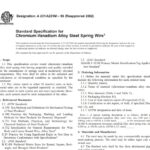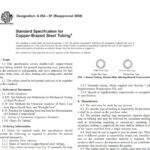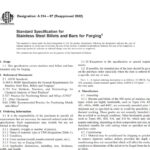Standard Test Method for
Spontaneous Heating Values of Liquids and Solids
(Differential Mackey Test)1
This standard is issued under the fixed designation D 3523; the number immediately following the designation indicates the year of
original adoption or, in the case of revision, the year of the last revision. A number in parentheses indicates the year of last reapproval. A
superscript epsilon (e) indicates an editorial change since the last revision or reapproval.
1. Scope
1.1 This test method covers the non-adiabatic determination
of the spontaneous heating values (SHV) of liquids and solids.
It is applicable to substances that are not completely volatile at
the test temperature. Spontaneous heating values obtained by
this test method is a qualitative indication of the degree of
self-heating that may be expected to occur upon exposure of
the sample to air at the test temperature.
1.2 Values obtained by this method are applicable to liquids
and solids supported on cellulosic surfaces. They are not
applicable to liquids on metal surfaces, on contaminated
surfaces, or at pressures above atmospheric.
1.3 Spontaneous heating values determined by the present
test method are regarded only as qualitative measurements of
self-heating which occurs under the conditions of the test. The
test method does not purport to produce a quantitative measure
of the enthalpy of reaction of the sample with air at a given test
temperature. Such data can be obtained by the use of an
adiabatic calorimeter. The existence, under the test conditions,
of a positive temperature difference between the sample and
the reference is evidence of a thermochemical reaction in the
sample.
1.4 The magnitude of the measured temperature difference
is a semiquantitative indication of the enthalpy and rate of that
reaction. Since factors such as heat loss from the sample to the
bath and quenching of the reaction due to too rapid consumption of oxygen affect the amount and duration of the measured
heat effect, care must be taken not to attribute too much
quantitative significance to the test results. It is sufficient, for
the purpose of this test, is to determine whether or not the sample
is capable of undergoing a self-heating reaction of sufficient
magnitude and rapidity to produce a detectable thermal effect.
The spontaneous heating value (SHV) can be lower than the
test temperature. A negative result does not preclude spontaneous heating initiating at a temperature higher than the test
temperature.

Click below to download Astm D 3523 – 92 (Reapproved 2002) pdf free
Click here to download Astm D 3522 – 86 (Reapproved 2002)E1 Pdf Free Download






